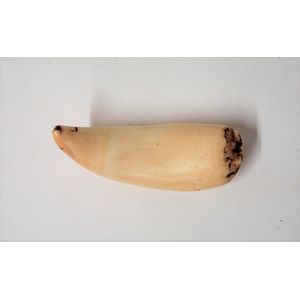Victorian Sardonyx Cornucopia Watch Key
A Victorian 15ct. yellow gold cornucopia form watch key, repeating engraved leafy sprigs, a sardonyx panel inset, old repair.
You must be a subscriber, and be logged in to view price and dealer details.
Subscribe Now to view actual auction price for this item
When you subscribe, you have the option of setting the currency in which to display prices to $Au, $US, $NZ or Stg.
This item has been sold, and the description, image and price are for reference purposes only.
- Victorian Period - The Victorian period of furniture and decorative arts design covers the reign of Queen Victoria from 1837 to 1901. There was not one dominant style of furniture in the Victorian period. Designers used and modified many historical styles such as Gothic, Tudor, Elizabethan, English Rococo, Neoclassical and others, although use of some styles, such as English Rococo and Gothic tended to dominate the furniture manufacture of the period.
The Victorian period was preceded by the Regency and William IV periods, and followed by the Edwardian period, named for Edward VII (1841 ? 1910) who was King of the United Kingdom and the British Dominions and Emperor of India for the brief period from 1901 until his death in 1910. - Cornucopia - The cornucopia, literally the horn of plenty, is a symbol of abundance and wealth. It is traditionally is represented by a curved goat horn overflowing with grain and fruit.
Modern cornucopias are often depicted as horn-shaped baskets filled with food, and this symbol is often associated with the harvest. This decorative device has a long and ancient history, with roots in Greek mythology.
In one version, when Zeus was playing with the goat Amalthea he accidentally broke off one of her horns. To atone for this, Zeus promised Amalthea that the horn would always be full of whatever fruits she desired. This became the cornucopia of the Roman goddess Copia, the personification of plenty. Other goddesses, including Fortuna and Pax, also held the cornucopia.
In furniture and decorative arts, cornucopia as a decorative element have been popular since the 16th century and can be found on items as diverse as light fittings and candelabra to clocks, sculpture and statuary and furniture.
In ceramics, cornucopia shaped vases were popular in the 19th century, in singles and pairs.
This item has been included into following indexes:
Visually similar items

Unset pear shaped coral cabochon (9cts)
Sold by
in
for
You can display prices in $Au, $US, $NZ or Stg.

An amethyst pendant, bezel set, 9 carat white and yellow gold. Weight 1.4g. Height 1.3 cm
Sold by
in
for
You can display prices in $Au, $US, $NZ or Stg.

Five sterling silver toast racks, of petit form, (5)
Sold by
in
for
You can display prices in $Au, $US, $NZ or Stg.

An old semi-polished Fijian tabua (sperm whale tooth), the fine hole to the tip end broken through, the other end solid. Length 13.4 cm
Sold by
in
for
You can display prices in $Au, $US, $NZ or Stg.
